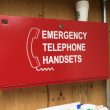2009’s list of don’ts
Welcome to the new year. If you’re like me, you’ve been reading the plethora of 2009 predictions for the technology world. Rather than adding to that list, I thought I’d instead share with you some of what I DON’T want to see happen in public-safety communications this year. (I like to be a bit contrary, I suppose.) Here are my top three:
1. Obviously, the rapid deterioration of the U.S. economy has been on the minds of nearly every adult American, as experts are calling the current downturn this nation’s worst recession since the Great Depression. With public-safety communications typically supported almost entirely by government groups funded by tax dollars—which are taking a hit—new initiatives could be at risk. I don’t want to see a slow down in spending on critical initiatives such as multi-band public-safety radios, interoperable digital systems and next-generation 911. While NG-911 standards won’t be ready until 2010, various PSAPs across the country are expected to roll out parts of an IP-based 911 system between now and then. The hope is these systems will give NG-911 a jump start. There also are a host of other technological advances that would help first responders do their jobs better, but which may be difficult to justify in this struggling economy.
2. I don’t want to see roadblocks to the development of next-generation 911 standards. NENA will be working hard this year to hammer out standards for an IP-based 911 system to not only handle the plethora of communications methods—such as text, video and data—but also make the nation’s 911 systems more flexible to address emergency calls. For instance, when a 911 center needs to evacuate, emergency responders could still respond to calls via a virtual 911 center. This year, significant NG-911 standards are expected to be unveiled, beginning with the core IP and software-services standard — often referenced as the i3 standard — that is slated to be finished early in the first quarter of 2009. If that process is derailed, the establishment of some PSAPs as NG-911 beta sites fielding live 911 calls could be pushed beyond 2010—a significant blow to the 911 community, which needed this capability yesterday.
3. In early 2008, the FCC tried to auction 10 megahertz of 700 MHz commercial spectrum—known as the D block—that would be paired with 10 megahertz of public-safety broadband spectrum to provide the foundation of a shared public/private network for first responders. The auction failed, and now the FCC is attempting to re-craft the rules to attract more commercial bidders. I don’t want to see another D-block debacle in 2009. The first-responder community needs to access a mobile broadband network for a variety of mission-critical functions such as transmitting maps, mug shots and video surveillance, and it needs to do so in a way that leverages commercial equipment so that it can reap the benefits of economies of scale.
I’m interested to know what you don’t want to see in 2009. Let me know in the comment box below.

















